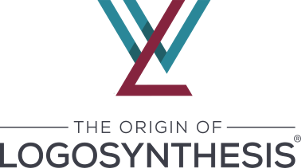10 Ways of Dealing with Psychotherapeutic Topics when Applying Logosynthesis in Coaching and Psychological Counselling
The question as to the boundary between coaching and psychotherapy with Logosynthesis quite rightly comes up time and time again. Ethical and professional issues are connected with the question. As the past has shown, coaches and psychological counsellors can even run into professional problems if the boundaries are unclear. I therefore present this short article that covers ten means of avoiding such pitfalls.
- Consistently avoid using established clinical terms and diagnoses in your work: Trauma, Anxiety Disorder, Phobia etc. You don’t need them in the application of Logosynthesis; they mostly stand in the way of the client’s process. For the application of Logosynthesis, it’s sufficient to know if and where energy is blocked or frozen and to specify the blockage type:
- Structures in the triggers: Visual, Auditory, Kinaesthetic, Olfactory (VAKO)
- Structures in the reactions: Body, Emotions, Thoughts, Behaviour.
- Start from the topic presented by the client and remain close to the client’s language. Refrain from interpreting the possible source of the presented symptoms and don’t explicitly ask for childhood experiences. A counselling intervention: ‘Have you experienced that repeatedly?’ A psychotherapeutic intervention: ‘Where do you know that from?’
- Place more emphasis in your work on the identification and dissolution of beliefs and fantasies than on memories of distressing events. You will then avoid topics that can be classed as psychotherapeutic.
- When dissolving triggers, start from people in the client’s current life and use general, consolidating formulations in the sentences – following the model ‘This representation of X and everything this representation stands for’. The past will then be neutralised without being directly activated.
- Take plenty of time to build up a working relationship in which care and accuracy are central. Doing so will make the client feel safe and secure with you if archaic material emerges during the process’ course.
- Stay three steps behind the client at all times. Don’t go ahead of him or her, as doing so may mean that you introduce your own images and interpretations. Staying behind guarantees that no disturbing experiences will be activated unnecessarily or prematurely. It also stabilises the working relationship.
- During the process, ensure a regular return to the problem that the client presented. A link will then remain between the client’s conscious reason for visiting you and the process in the sequence of sentences.
- Clients often have their own psychological theories to justify or explain their suffering. Try to understand and interpret clients’ own psychological interpretations directly as triggers and reactions – instead of following clients in their psychology.
- Avoid using the sentences for psychological concepts and constructs: Think Energy. Even if the sentences could work in such cases, they’ll work better and more precisely if they’re related to representations of sensory experiences.
- The use of images and metaphors as topics for the sentences also allows for processing without direct activation of disturbing events. Avoid your own metaphors and use those that have the most emotional emphasis for the sentences’ content.
It’s common for traumatic memories to become active during an intense and on-going process. It’s nevertheless worthwhile for coaches to practice and use the above-described techniques. They will lead to greater professionalism within your practice as a coach or counselor:
- You can use them to avoid the psychotherapeutic field and so also avoid potential boundary disputes with judicial authorities and professional associations.
- Traumatic memories may still become active despite your use of these techniques;
your working relationship will nevertheless be more stable and the risk of uncontrollable emotional outbursts will be reduced. - These techniques keep the client close to the reality of everyday life, so it becomes easier to restore the connection to this reality after the spontaneous activation of disturbing memories.
A referral to a specialist in psychiatry or psychotherapy is indicated if overt mental illnesses are present or if disturbing topics frequently come to the fore despite consistent use of these techniques.
© Dr. Willem Lammers, Bad Ragaz, 2013, info@logosynthesis.net


